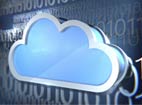People have been calling for an end to the spinning disk drive for quite a while, but is it possible that it could actually come to pass over the next few years?
The history of technology innovation argues against it. Rarely does something new come along that pushes the old way into extinction – broadcast TV is still with us, as are trains, and the postal system still delivers the odd hand-written letter.
But when it comes to the disk drive, it is getting harder and harder to make a case for its continued deployment in either enterprise or consumer settings, even for long-term, archival applications. It’s not just that solid state solutions are faster and more flexible than disk, but they are becoming increasingly suited to the types of modular infrastructure that is currently finding favor in both the cloud and the enterprise, not to mention being more conducive to the distributed resource and application environments that are driving the new economy.
You won’t get any argument on these points from leading Flash developers. Pure Storage’s John Colgrove has made no secret of his desire to push mechanical drives into obsolescence. He says the process is now nearing its end stage as diminishing sales fail to justify the development and manufacturing costs of disk. This leads to fewer drive options that appeal to smaller pools of applications, which then erodes sales even further, and the cycle repeats itself. Meanwhile, emerging developments like multilayered 3-bit per cell Flash (3-D TLC) will soon provide cost parity with a standard 10,000 rpm disk drive.
Flash proponents have been arguing this way for years, however, and disk drives are still here. But it cannot be denied that, if the writing is not already on the wall for disk, it’s getting there at a rapid pace. Financial results for drive manufacturers are showing signs of strain, including Seagate’s recent dial-back of its fourth-quarter revenue projections by some $400 million. At the same time, the company reduced its margin outlook from 28.5 percent to 27 percent, a small drop to be sure, but signs of weak demand nonetheless. Meanwhile, the company has been playing up its strengths in other areas, such as recovery services and integrated cloud platforms.
Meanwhile, disk drive makers continue to push the one advantage that mechanical has over solid state: capacity. A case in point is Toshiba’s new 6 TB MC04 device that matches raw capacity with a 6 Gbps SATA interface and a 3.5-inch form factor. The drive spins at 7,200 rpms, which lowers operating costs but at the expense of seek and retrieval times, particularly when applied to high-volume, small-packet applications like ecommerce. It is worth noting, however, that Toshiba, the inventor of Flash, is still building mechanical drives.
And with developments like helium-filled devices and shingled magnetic recording (SMR), drive technology is certainly not stagnant. HGST recently released the Ultrastar Archive HA10 that features both technologies for improved density and power efficiency while still maintaining top reliability and performance. As the name implies, however, this is primarily an archival solution, thus the focus on both capacity and longevity (2.5 million MTBF). But as Big Data and the IoT take center stage in the enterprise, it is questionable whether even archives will remain the quiet back alley of the data universe for very long. There is value in historical data too, so many organizations may find themselves in need of faster performance in long-term storage as well.
A world without disk drives is still a difficult concept to grasp, but I think it is fair to say that we are on the verge of a storage transition in which solid state will replace hard disk as the working medium for day-to-day enterprise applications. The speed at which users access data and applications is usually dictated by storage, and as knowledge workers become more vested in smartphones and tablets in their personal and professional lives, the idea of waiting even a few seconds for a spinning platter to queue up their targeted data will soon become quaint indeed.
Ultimately, it won’t be technology that pushes the hard disk off center stage, but the evolving requirements of the knowledge workforce.
Arthur Cole writes about infrastructure for IT Business Edge. Cole has been covering the high-tech media and computing industries for more than 20 years, having served as editor of TV Technology, Video Technology News, Internet News and Multimedia Weekly. His contributions have appeared in Communications Today and Enterprise Networking Planet and as web content for numerous high-tech clients like TwinStrata, Carpathia and NetMagic.



